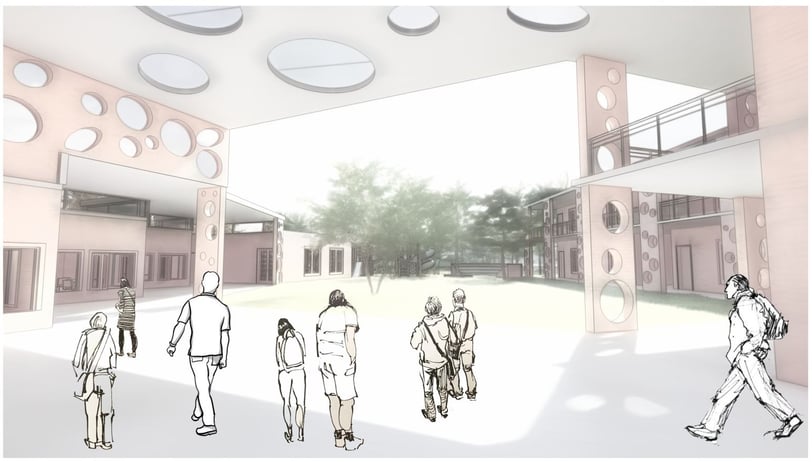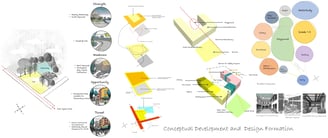Site-Based Spatial and Functional Adaptation Of Educational Spaces: A Courtyard Base Transformation of Elementary School Design
The field of architecture known as educational space design deals with all facets of placemaking, such as community integration, living quality, comfort, functional integrity, and landscaping. When it involves a school for kids, notably an elementary school, things become even more problematic. In this situation, it is essential to give children with a childlike environment that allows them equal access to all activities, including those that promote social integrity, place-based equality, and the development of communal bonds among children.
SUSTAINABLE LIVING
Muhammad Golam Sami
10/12/20183 min read


Image: Elementary School Project, Muhammad Golam Sami' 2018
Educational space design is a branch of architecture that works with all aspects of placemaking, including community incorporation, living quality, comfort, functional integrity, and landscaping. It gets even more complicated when it is a school for children, specifically an elementary school. In this instance, it is critical to provide a child-like environment with equal access to all functions for all kids, including social integrity, place-based equality, and the formation of community connections among children. This blog will explain an architecture technique that can help this placemaking concept. Each educational institution has to develop and design an individual site. In the case of educational institutions, particularly elementary schools, designing some functions such as classrooms, hallways, playgrounds, and so on is required. Because a comprehensive playground is required, it is critical to consider how the green will be connected to the classrooms and how it will preserve an individual and continuous character. This scenario will explore how site-based spatial and functional adaptation works in depth.
A great primary school design is heavily reliant on the site. The site considers the subject since its size and dimensions impact many things, such as how the playground will be constructed and how the classrooms will be built to contain it. This problem is addressed by Place-Based Spatial and Functional Adaptation. Replacing a site with place-making ideas entails using the site as a starting point, organizing functions accordingly, and retaining spatial connectedness within them. To demonstrate the point, consider the design example below.
Assume a school needs to be created with a playground and visual and physical connectivity for all children. That is, they must be integrated into the classroom allotted to them. Second, a continuous path must be constructed to determine spatial connectedness and community integration between these classrooms.
We used courtyard-based design transformation to solve these two issues. A courtyard, in essence, denotes an architectural area that is primarily defined by surrounding functional space while also providing breathing space, recreational usefulness, and compacting and integrating an architectural design. It also improves dwellers’ connectivity. We adapted the courtyard concept to the elementary school in such a way that it essentially provides a playground as the surroundings of all functions and utilizes the entire site effectively and simultaneously without producing any inefficient space. The playground necessitates a vast single, individual, and continuous play. That goal, leaving the site unnecessarily as a functionless backyard, is a waste of space and not an intellectual answer.
A design diagram for an elementary school is shown below. Site boundaries are conveyed through a single spatial connection, which secures functional continuity. A single playground can be built if the area between these links is developed as a whole. In terms of Functional Surroundings, the transformed or modified courtyard that serves as a playground will also serve as a community courtyard by engaging all students in spiritual and emotional learning at the same time, as well as by developing a communal recreation evolving entity design that supports integrity and unity.


Figure 1: Design Diagram
Meet The Author
Related ARTICLES
Related PROJECTS
An Elementary School: Designing a Path Towards Exploration
The main objective of this project was to design an elementary school for children, creating a child-friendly environment as well as designing a continuous exploration path that supports children's psychology and resists getting lost.
Image: Elementary School Project - Playground
Location: Mujgunni, Khulna; Year: 2018






